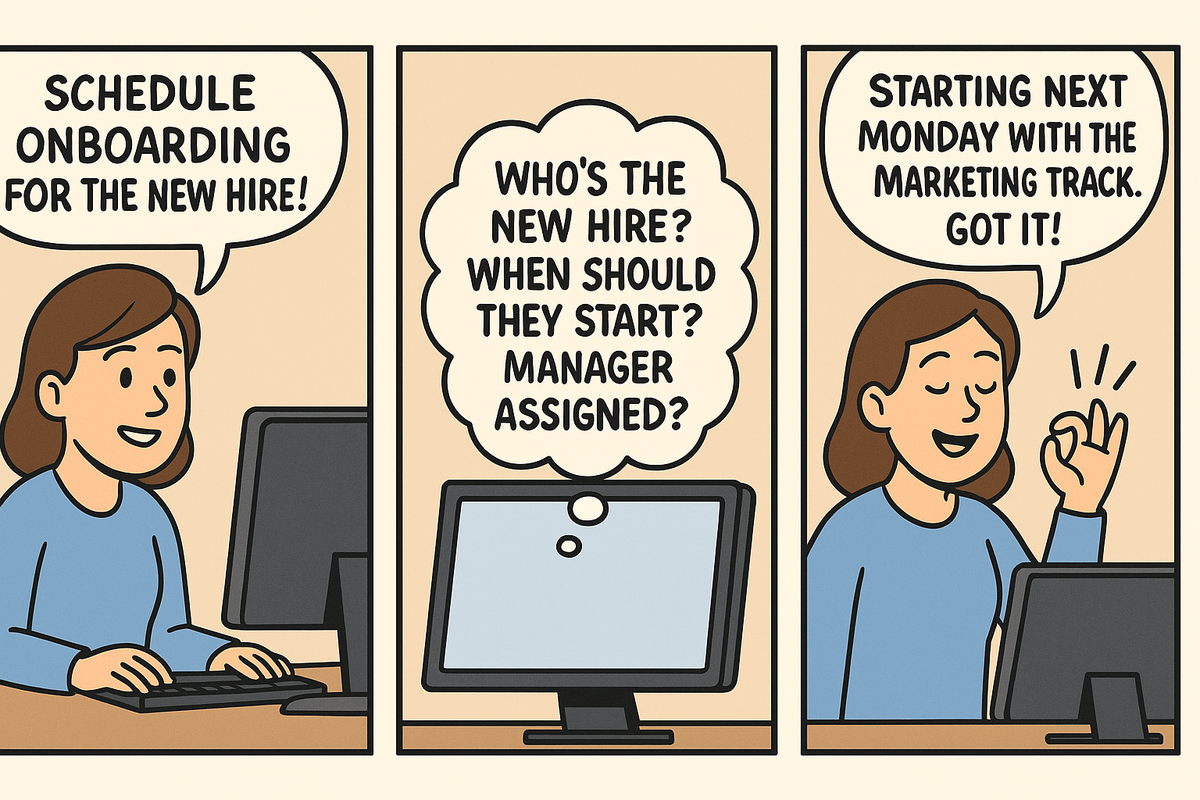Intro:
Capturing user intent sounds simple: listen, interpret, act. But in real systems, user input is messy, incomplete, and sometimes misleading. Without careful handling, an agent will deliver the wrong outcome - fast. The art of capturing and expanding user intent is the foundation of all successful agent-driven systems.
It’s where systems move from being reactive order-takers to proactive, trusted collaborators.

1. The Nature of Human Intent
Most users don’t think like systems. They don't naturally structure requests cleanly.
A simple prompt like "schedule onboarding" could hide dozens of implicit expectations:
- When?
- Which department’s process?
- Standard training? Manager notification?
Users expect systems to "just know."
Without expansion and clarification, most intents are dangerously incomplete.
2. Capturing Initial Intent
Initial prompts should feel frictionless. Good systems encourage users to express outcomes freely, without being boxed into rigid forms.
- Example prompts:
- "Update payroll for Q2 bonuses"
- "Get me all accounts with overdue balances"
- "Create onboarding package for marketing team hires"
The key is not forcing users to pre-think fields, forms, or schema - let the system do the heavy lifting.
3. Expanding Context Automatically
Once intent is captured, systems should automatically layer in context:
- Who is the user? What’s their access scope?
- Is there a pending related action?
- Are there policy or compliance constraints?
- What's the historical pattern for similar requests?
Without context expansion, even "clear" prompts will lead to wrong outputs.
Agents must assume missing information and proactively enrich it.
4. Clarifying Without Breaking Flow
Heavy follow-up questions kill momentum. Instead, systems should progressively disclose questions only when critical gaps emerge.
Smart techniques include:
- Default assumptions with confirmation ("Starting onboarding next Monday - OK?")
- Minimal interruption ("Missing hire name - please provide")
- Dynamic refinement ("Assign to standard onboarding track?")
The goal is to maintain user flow while quietly increasing system confidence behind the scenes.
5. Real-World Case Example
Prompt: "Schedule onboarding"
Expanded Questions Agent Handles:
- Who is being onboarded? (Look up recent hire list)
- When should onboarding start? (Suggest standard 2-week start)
- Which manager is responsible? (Autofill from org chart)
- Which onboarding track? (Offer Marketing default vs Custom)
Only missing items prompt lightweight user inputs.
Everything else auto-populates or proposes intelligent defaults.
6. Tools That Help Capture and Expand Intent
Modern systems lean on:
- Entity recognition (pulling names, dates, companies from prompts)
- Data enrichment layers (augmenting with live internal system data)
- Default templates (based on historical workflows)
Without these tools, systems fall back into brittle rule trees that break under real-world ambiguity.
7. Final Goal: Outcome Confidence
The highest standard:
- Minimal user friction
- Maximum outcome accuracy
When users feel "the system gets it" after one natural prompt, loyalty and trust skyrocket.
When users have to double-check every step, agent credibility collapses.
Closing
Capturing and expanding user intent isn't about perfect natural language understanding. It's about smart defaults, progressive refinement, and context-enriched action paths. It’s where the real leverage of agent-based systems begins - and where the hard work hides.
What's Next
Capturing and expanding intent is just the first step. In the next post, we'll explore how to design agent flows that deliver outcomes cleanly - balancing system automation with user control and avoiding the common traps that cause agent experiences to feel robotic or brittle. The real magic happens when systems don't just understand intent - they act on it gracefully, confidently, and transparently.
Stay tuned for how to build outcome-first agent flows that users love.